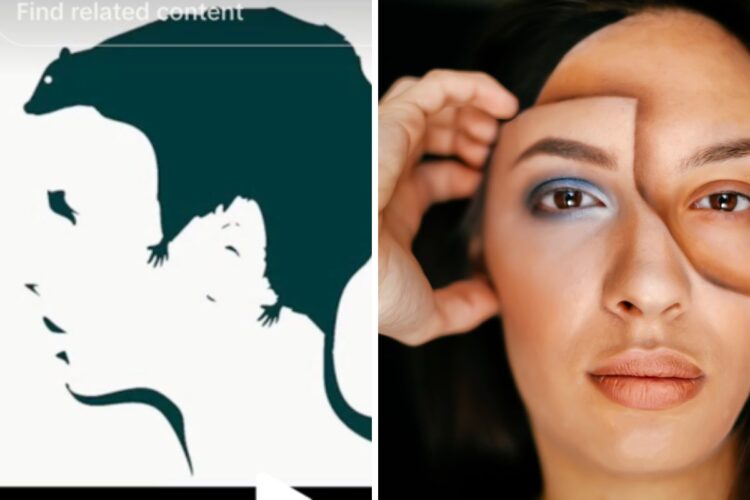Optical illusions have been a source of fascination for centuries. They can trick our brains into seeing things that aren’t there, or perceiving things differently than they actually are.
Recently, a new optical illusion has been making the rounds on TikTok, and it claims to reveal your biggest fear in life.
@psychologylove100 What affects you most? #whatdoyouseefirst #personlatytest #psycologytest #illusionoptic #psycologytricks
The illusion is a simple image that can be interpreted in two ways. Some people see a rodent in the image, while others see a face.
The video that goes along with the illusion claims that what you see says something about your deepest fears.
If you see a rodent, it means that your biggest fear is ridicule and being dependent on others. If you see a face, it means that your biggest fear is loneliness.
So, is there any truth to this illusion? There is no scientific evidence to support the claim that the illusion can reveal your biggest fear.
However, that doesn’t mean that it’s not interesting or thought-provoking. Optical illusions can tell us a lot about how our brains work, and they can also be a fun way to test your perception.
There are a number of reasons why people might see different things in the illusion. One reason is that our brains are constantly trying to make sense of the world around us.
When we see an ambiguous image, our brains fill in the gaps based on our own experiences and expectations.

So, if you’ve had negative experiences with rodents in the past, you might be more likely to see a rodent in the illusion.
Another reason why people might see different things in the illusion is that our brains are wired to see faces. We are very good at detecting faces, even in ambiguous images.
This is because faces are important for social interaction and communication. So, it’s not surprising that some people see a face in the illusion.
Whether you see a rodent or a face in the illusion, it’s all a matter of perception. There is no right or wrong answer. The important thing is to be aware of how your brain works and how it can be fooled by optical illusions.
The TikTok illusion is just one example of the many optical illusions that exist. There are countless other illusions out there that can trick our brains in different ways.
Some illusions are based on how we perceive color, while others are based on how we perceive motion.
Optical illusions can be a fun way to learn more about how our brains work. They can also be a reminder that our perception of the world is not always as accurate as we think it is.
So next time you come across an optical illusion, take a moment to try to figure it out. You might be surprised at what you see.










